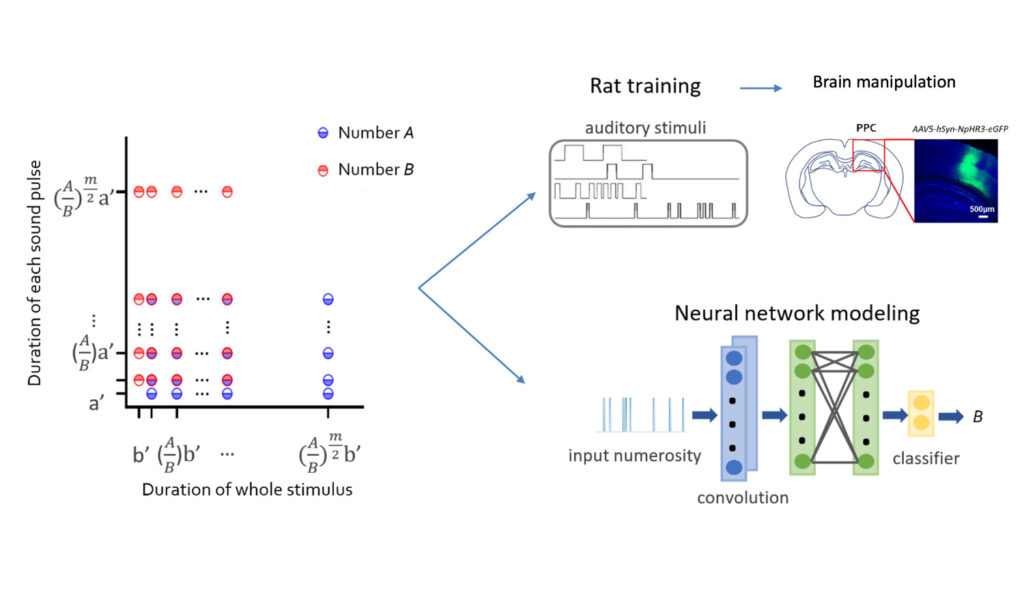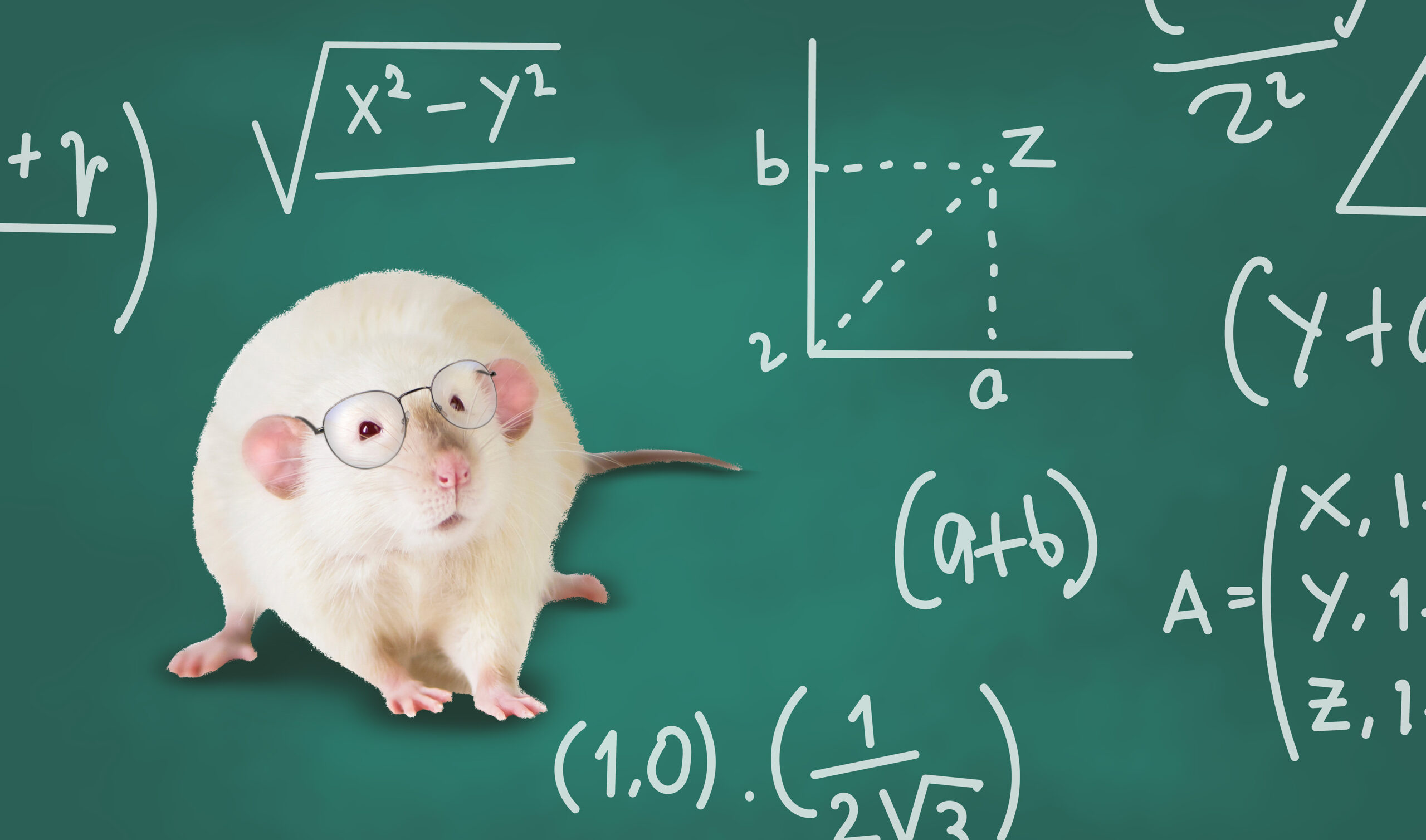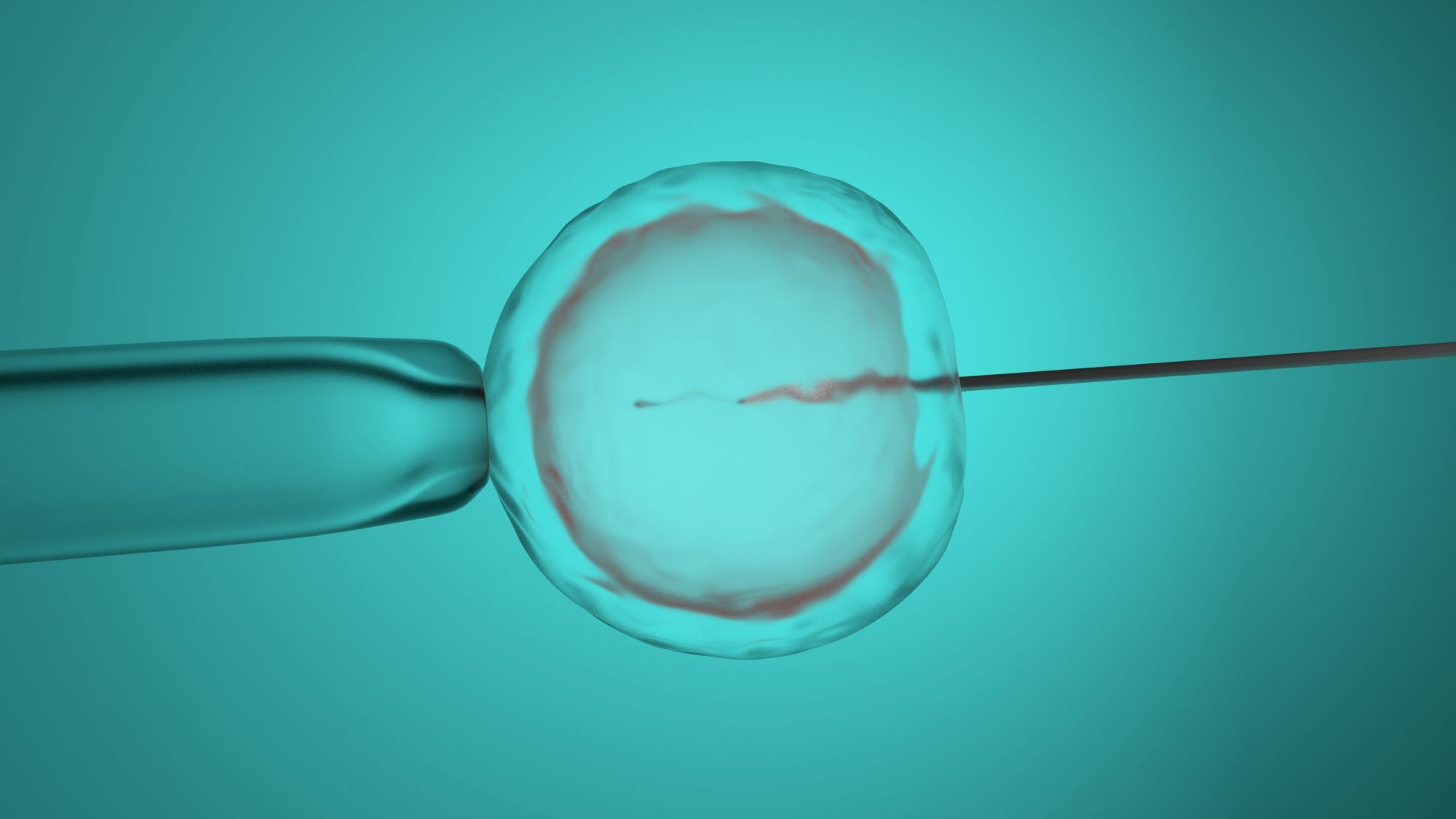“Number sense is such a vital adaptive ability for survival and reproduction in the animal kingdom,” says Professor Ke Ya from the School of Biomedical Sciences at The Chinese University of Hong Kong (CUHK)’s Faculty of Medicine (CU Medicine). It helps them with finding food, escaping from predators, social interaction, mating and more.
However, the question of whether animals have number sense, which refers to the ability to distinguish between numbers as purely abstract concepts, not linked to anything in the physical world; or whether they have a sense of magnitudes, which refers to the ability to distinguish between large and small, long and short and other ways in which those numbers relate to dimensions in the physical world, has long been a vexed one.
“Generally, an increased number of items is associated with increased physical magnitudes. For instance, an increased number of apples is associated with the increased density and volume that the apples occupy,” says Professor Ke.
It’s extremely hard to disentangle the two, and animal numeracy is exceptionally difficult to verify experimentally – after all, you can’t just ask a rat to count for you. Besides, scientists can’t agree on which one of them – the abstract sense of number or the physical sense of magnitude – comes first. Until, that is, a recent piece of research co-led by Professor Ke and City University of Hong Kong (CityUHK) researchers, and conducted by a CUHK team, finally answered the question.
The researchers conducted an experiment to assess the counting skills of rats. Using a specialised algorithm, the rats’ cognitive focus was directed only toward numbers, disregarding the magnitude aspect. Their brains were stimulated with specified numbers of randomly played sound pulses, and the rats were trained to press a corresponding button to earn food rewards.

“We developed an algorithm to minimise and control the distribution of magnitudes so as to allow us to apply a precise statistical approach to quantify their impact, in order to reveal the contribution of the number sense itself,” says Professor Ke.
The study, which took four to five years to complete, found that the rats were able to distinguish between sounds associated with specific numbers, discriminating among three different numbers, and consistently making the right choices that would lead to rewards.
The research team was able to block the rats’ posterior parietal cortex, a part of the brain specifically associated with the sense of number, without also affecting their sense of magnitude – showing that the two things are processed separately in the brain, and that there is therefore a specific area of the brain that deals with the sense of number.
“What we found is that the sense of number is independent of the sense of magnitudes, so we think they are both fundamental,” says Professor Ke. “The implication is that these two senses of quantity may evolve independently. This concept is important for us to further understand the nature of different cognitive functions carried out by the brain and their mechanisms.”

The research illuminates the processes that take place in the brain when creatures count. By shining a light on that, it allows scientists to better understand how the sense of numbers rooted in the brain. That applies to humans too – indeed, the potential for understanding human numerical disabilities was the main reason for undertaking the project in the first place.
By studying the neural basis of numerical ability, the team hopes to be able to determine why some humans struggle so much with numbers. Between 3% to 7% of people around the globe suffer from a condition known as dyscalculia. Like its better-known cousin dyslexia, which involves not being able to decode words, dyscalculia involves not being able to perform arithmetic, including lacking a sense of numbers, and is not linked to low intelligence levels. It is associated with a number of genes, but how those genes affect it remains unknown.
The research results point towards a possible future where, armed with an understanding of the physical processes by which humans understand numbers in the brain, effective ways of treating people who suffer from conditions such as dyscalculia can be developed. The posterior parietal cortex in human also likely encodes numbers, but the precise process by which it does so remains unclear. Professor Ke says that further experiments on animals are needed to better understand the process, which could be the same in more complex brains like those of humans.
“Understanding better the general brain mechanism of encoding and manipulation of numbers, and the reasons why some rats can learn faster than others, can inspire cognitive scientists and educators to develop medical or behavioural strategies to improve the numerical abilities of dyscalculia subjects.”










